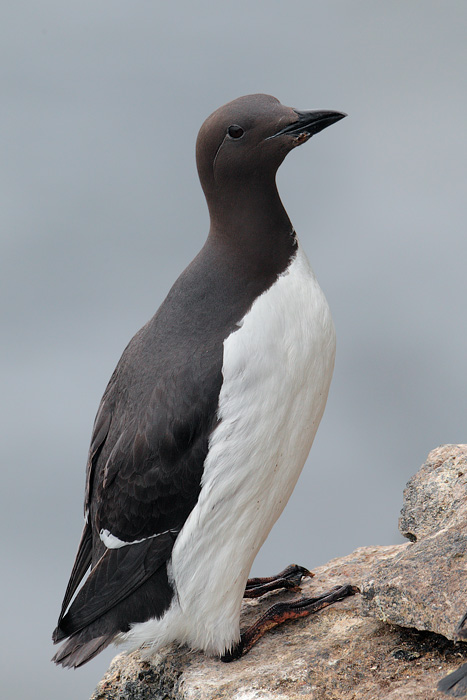
Uria aalge
TAXONOMY
Uria aalge Pontoppidan, 1763, Iceland. Five subspecies.
OTHER COMMON NAMES
English: Atlantic murre, common guillemot, thin-billed murre;
French: Guillemot marmette; German: Trottellumme; Spanish:
Arao Comъn.
PHYSICAL CHARACTERISTICS
15–17 in (38–43 cm); 33.5–37 oz (950–1,050 g). Black to
brownish head and upperparts; white underparts. Black bill is
long, slender, and pointed; mouth lining is yellow.
DISTRIBUTION
North American coast from New England northward to
Labrador, central California to northern Alaska, and from
Siberia as far south as Japan and Korea.
HABITAT
Rocky coastlines and adjoining seas.
BEHAVIOR
Pelagic. Rarely comes ashore except to breed. Common murres
are fast fliers and sometimes travel in large flocks. Their most
common vocalization has been described as purring.
FEEDING ECOLOGY AND DIET
Primarily fish; less commonly consumes a variety of marine invertebrates.
REPRODUCTIVE BIOLOGY
Breeds in large colonies, often with other species. Courtship
and copulation take place on land. A single egg is laid on bare
rock. The egg is marked with a distinct pattern so the parents
can recognize it; a common murre will find and retrieve its
own egg if the egg rolls away. Incubation takes 32–35 days.
The chick is fledged at 20–22 days after hatching and follows
the male parent out to sea to complete the period of parental
care.
CONSERVATION STATUS
Widespread and numerous. Concern in some areas due to
hunting and habitat degradation.
SIGNIFICANCE TO HUMANS
The common murre is hunted legally in large numbers in
Newfoundland.
Photo Gallery of - Common murre
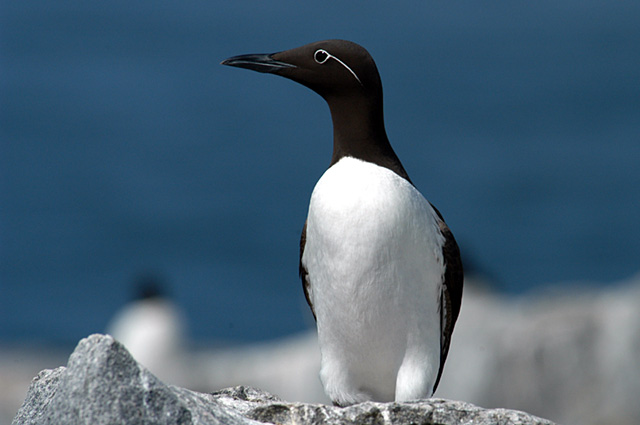
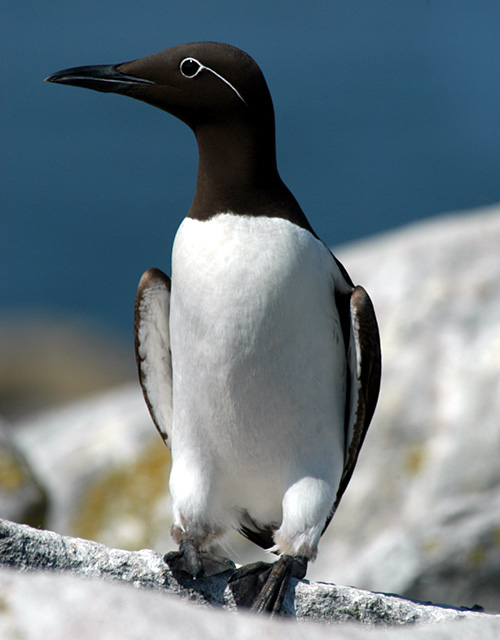
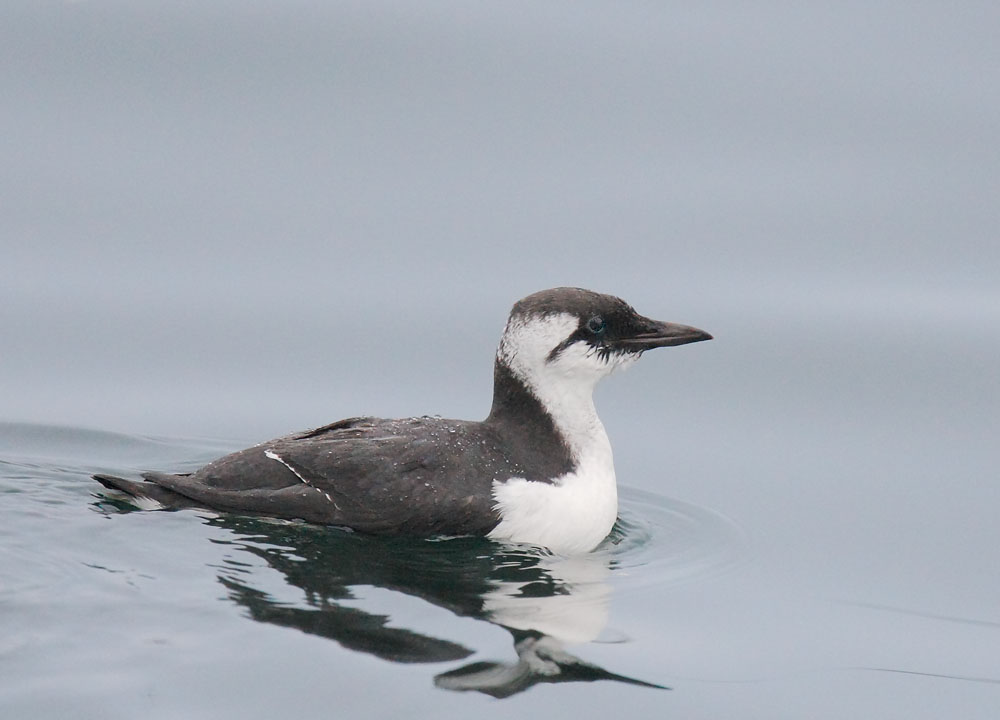
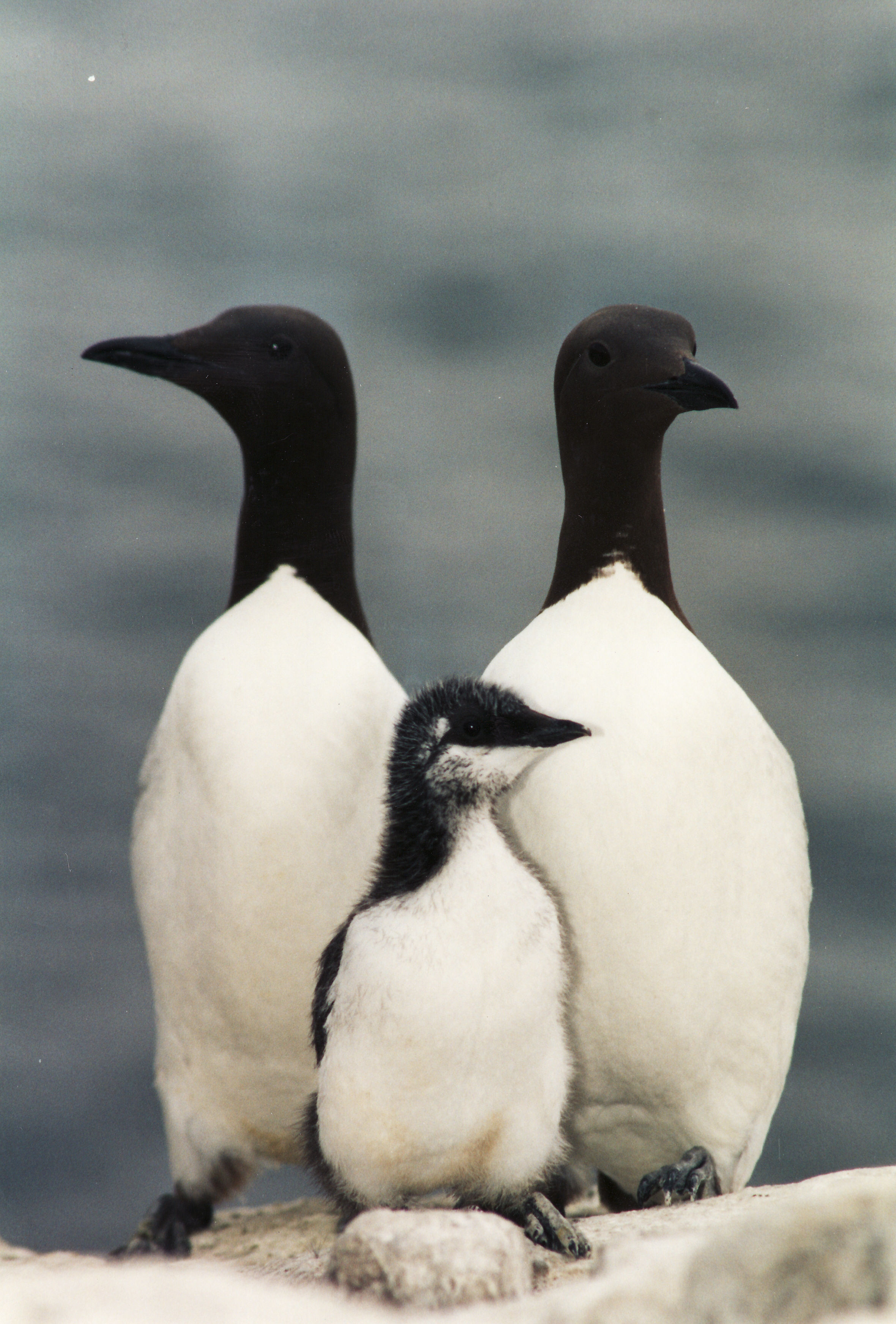
 Animalia Life
Animalia Life